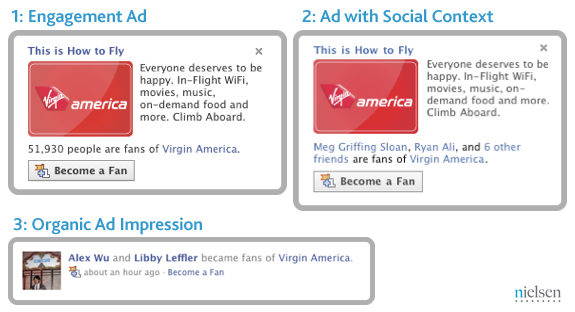So maybe you have an online budget and it’s time to build a strategy. Or maybe you have to build a strategy so that you can lobby the purse-holder for a budget to work with. How do you determine what channels are best suited for your goals? Well, each online channel offers a distinct form of user targeting, and how you target someone is going to affect how they react, respond, and/or convert. So it’s helpful to first understand each of these major targeting methods, and from there decide which online marketing channels are most compatible with your goals.
Intentional Targeting: Search Engine Marketing

Don’t you just love generic vectors about targeting?
This kind of targeting is most notably offered through search. Whether its PPC or Organic Rankings, the idea here is to target users who are already looking for (information on) your products and services. Essentially, the user is already typing in keywords related to your products and services, so the idea is that these users are that much more pre-qualified. Whether they’re doing research, comparative shopping or just looking for information, the user is actively interested in products/services similar to yours and, presumably, that much closer to a purchasing decision. This makes intentional targeting ideal for campaigns that are aimed specifically at generating sales/leads. Furthermore, these campaign are easily measurable and quantifiable – e.g. X-amount spend = X-clicks = X-number of conversions. One thing that intentional targeting can’t do well is tell you about your actual customer. Sure, it can reveal the different search terms they used to find you, what the average value of each transaction is on any given search term, and where in the world they are, but it can’t tell you much about your customer’s demographics. Of course, when users are this pre-qualified, sometimes that’s all you need to know.
Social Graph Targeting: Facebook Ads
Social graph targeting allows you to tap into a variety of variables for targeting your ads. From demographics to interests to network, social graph targeting lets you find new customers/leads through your existing ones. In a nutshell, social graph targeting allows you to reach users who are connected to your existing customers. This happens at two levels. First, you can outright choose to target only people connected to or not already connected to your brand. Secondly, your ads obtain an additional layer of engagement if someone in that user’s social graph has already Liked or interacted with your brand. There are two operative assumptions behind social graph targeting: (1) that if a user in interested in something, they are probably connected to other people who’ll be interested in that something, and (2) that a user has influence with their connections to the point that if they’ve interacted with a brand, their connections will be more likely to do so.

Facebook Ad Formats – Credit: Nielsen
Social graph targeting is well suited for a variety of goals – from branding to generating leads/sales. What’s important, however, is that you choose the right kind and blend of ad formats. Facebook offers several different forms of “sponsored stories” alone, and while some are very effective at engaging users, they may not be well suited to get that user to take action beyond the Facebook ecosystem. With social graph targeting, it’s also important to approach measurement in a, well, measured way. As Dan pointed out recently, effectively measuring the success of Facebook ads requires you measure more than one KPI at a time. Indeed, you need to identify what KPIs are most relevant to your goals, and then track performance from there.
Interest Targeting: Pinterest & Twitter
This third kind of targeting is probably the one that is applicable to actual advertising. It is, however, particularly applicable to marketing (and PR) in general. Essentially, interest-based targeting is what you do when you want to reach (potential) customers who are not actively looking for your products/services and are in no way connected with your existing customers. In other words, you reach out to connect with people based on their interests. Now, this differs from Facebook targeting in an important way. With Facebook, your interest targeting bears on what people have actually stated their interests are. With targeting that’s more exclusively interest-based, you’re targeting user based more on (1) the content they’re sharing, (2) the keywords they’re using when sharing it, and (3) the interests they organize their profile around — e.g. bio keywords, hashtags, pinboards, etc… This is where Twitter and Pinterest come into the marketing mix. Essentially, these are social networks where users’ activity is based largely on what interest them, and this allows you to find people interested in your industry, connect with them, and make them aware of you brand and its products/services. Of course, because you’re dealing with actual ads, here, you have to approach both budget and measurement in a different way. For starters, budget will deal directly with man-hours and assets (such as creating original branded content to share). And when it comes to measurement, you’ll be looking most at referral traffic, how well that traffic converts, and what additional upticks in conversions can be tied loosely back to your initiatives on these channels.
Targeting By Your Goals
Before investing into any channel, you should really examine that channel through the lens of your goals. Paid search or SEO, for example, is ideal for driving hard sales, but if one of your goals is to stimulate additional demand for your products/services, then you might want to look into Facebook Ads first. Each online channel offers marketers a unique way of targeting users. What’s important is that marketers first ask themselves which one of those targeting methods best aligns with their online marketing goals. From there, they can plan a proper strategy and invest budget where it makes the most sense.



